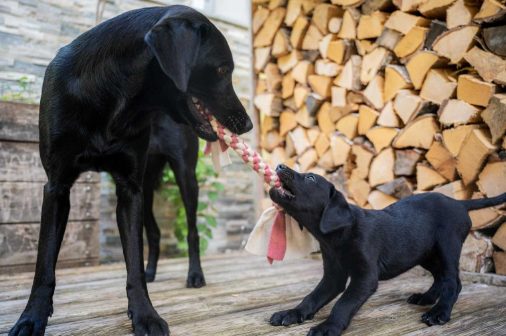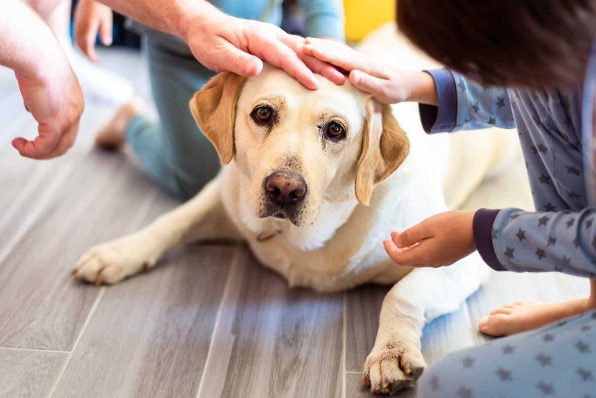
Did you know that Labradors have been declared to be the naughtiest breed? Well, according to the BBC, they are. And with their strong prey drive and ability to overpower other dogs in any situation, Labradors can be a bit of a handful in training. For your Labrador to not be labelled a "naughty" animal, you'll need an appropriate training plan and lots of patience!
While there is no way to train your dog to possess any specific negative personality traits, there are ways for you to control their behaviour and encourage good, positive behaviours. Labradors are playful and intelligent animals prone to powerful drives and energy that sometimes manifest as destructive behaviour. A disobedient Labrador will run around the house looking for trouble- a significant part of obedience training is teaching your canine not to do this.

How many levels are there?
There are many different levels of obedience in which you can work with your dog. They range from simple commands and manners taught very early to advanced techniques and exercises used only by professional trainers.
1. Basic Commands
Before you begin training your dog to obey basic commands, create a command list. You can do this by taking your own experience and training your dog to pull on a leash or not jump on you as soon as you walk into the room. Once you have your list of commands, then it's time for basic obedience classes.
2. Beginning Obedience Classes
While many levels of obedience training exist and can teach your dog most or all basic commands, these classes are great for newer owners and owners who want a refresher course in some of the more complex issues of owning a dog.
3. Advanced Commands
Advanced obedience classes teach you to influence your dog's behavior in several ways. You'll learn how to handle the behaviors you see and respond to and train other household members, including children, older adults, or people with disabilities. You'll also learn about the problems that might arise with your dog's behavior and how best to address any issues.
4. Powerful Drives and Common Problems
A powerful drive can cause your dog to perform an activity and be very difficult to stop. Strong drives can sometimes result in destructive or disobedient behavior as they override a dog's more positive behaviors. Common drives include
•Prey- drive to chase after small moving objects like mice, birds, and other dogs
•Defense- fight or flight response when your dog feels threatened by another animal or person
•Hunting- common in higher energy Labradors and other sporting breeds, these dogs are driven to chase down and retrieve whatever they can find to bring back to you. It can include things like shoes, socks, teacups, and more!
Labradors have an immense prey drive! As with all powerful drives, your Labrador will never outgrow it. They will get more vital as your dog ages and are only satisfied once the prey is caught. Because of this, you must never allow your Labrador to chase other animals, including squirrels and stray cats.
The key to training your dog to obey your commands is to ensure that the command is strong enough for them to respond to but not too strong. Simple things like "sit" or "leave it" are usually not too challenging for most dogs and may even be trained without training aids. However, something more significant like "no bite" will take a bit more patience as you train your dog not to respond as instinct when another animal or person comes near them.
Training a dog to walk on a leash without pulling or biting is easy, but training your dog to stay off the furniture in the house can sometimes be more challenging. Here are a few tips that will help you with this task:

Vary Your Commands
When you train your dog to stay off the furniture, you'll want to give them new commands they must obey each time. Instead of giving your dog the same command, like "stay," and expecting them to respond, give them a different command each time. This way, they will have no choice but to learn when it is time for their following command to be heard.
Now you know how to train your Labrador to stay off the furniture and not pull. Now that you know how to get your dog to obey commands, what will you do with them? I'm sure they will show you some tricks, but they might also be very intelligent and clever.

0 comments:
Post a Comment